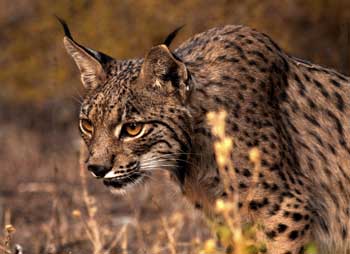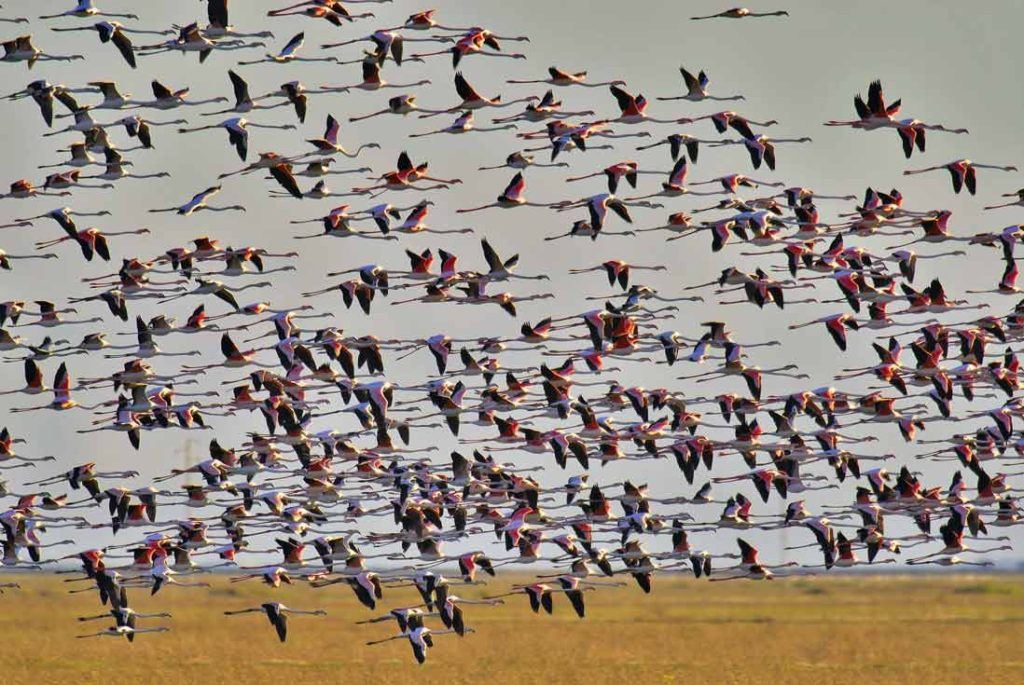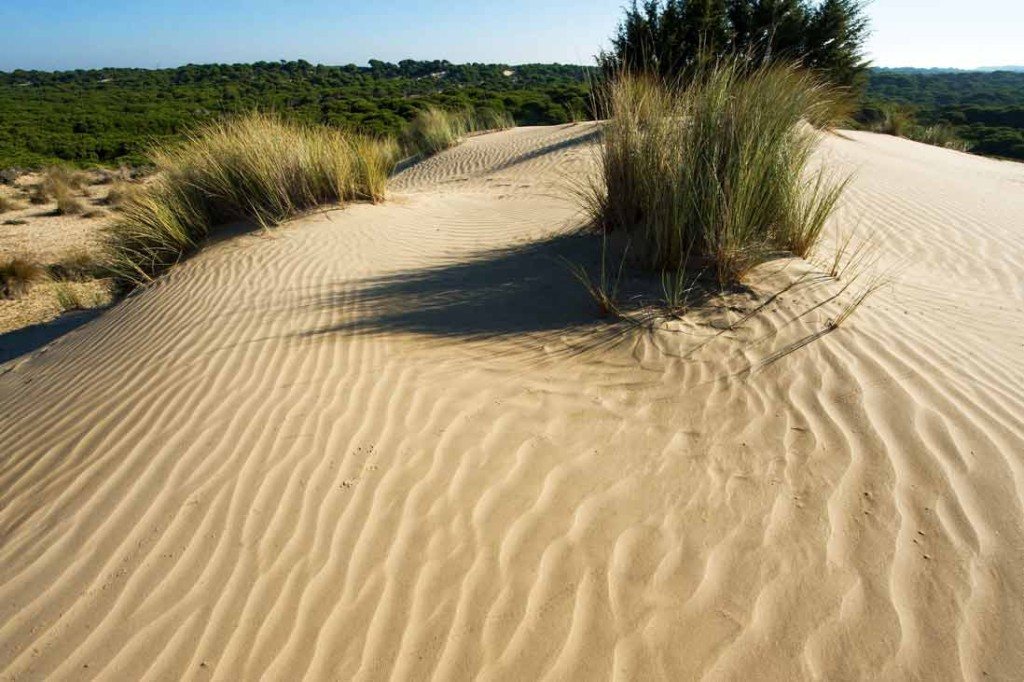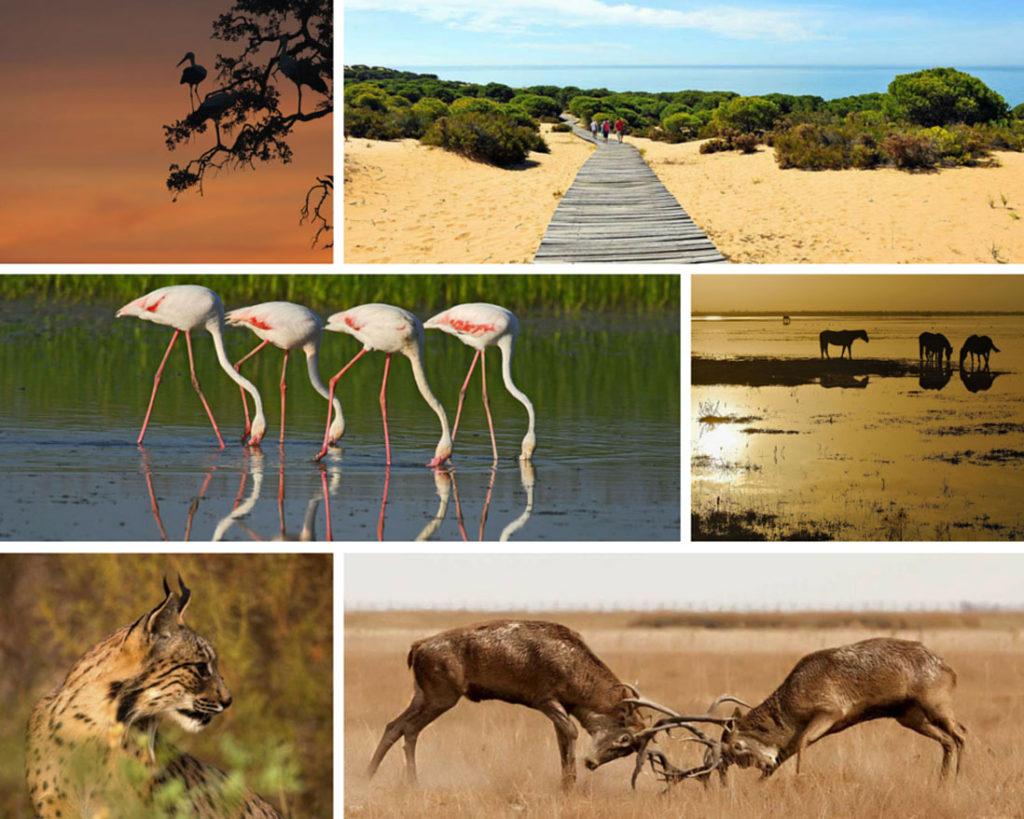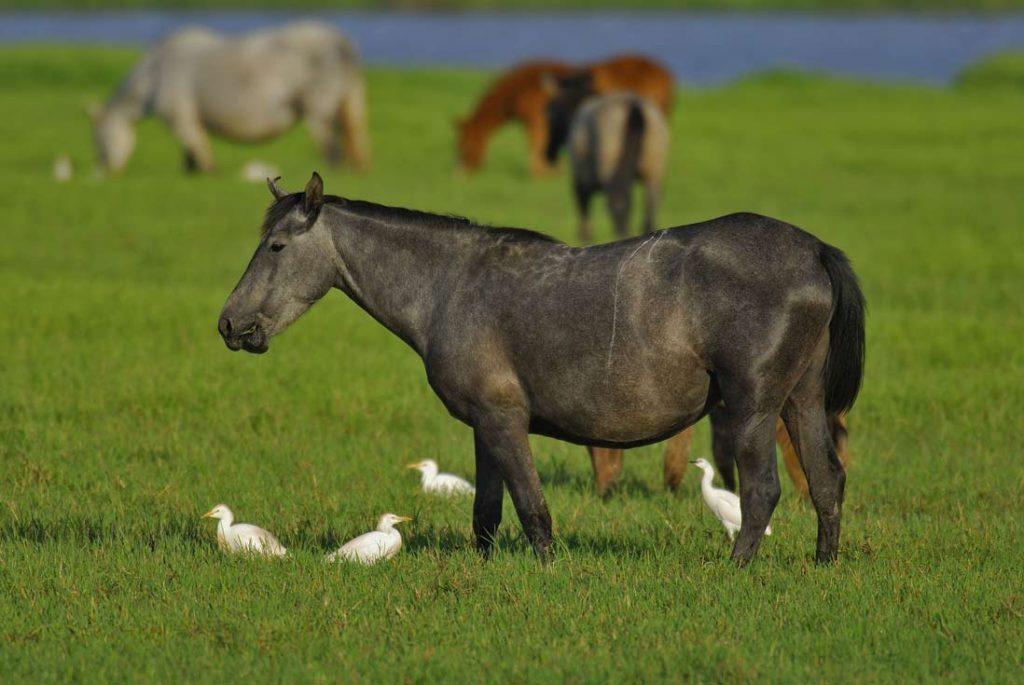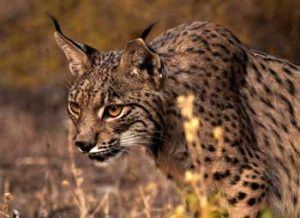The privileged location of Donana National Park lies between two continents with vast territory straddling three Andalusian provinces: Cadiz, Huelva and Seville. This makes it a key crossroad for migratory routes and resting place for thousands of birds coming from all over Europe and Africa, many of them endangered.
With an area of 110,000 hectares, Parque Nacional y Natural de Doñana consists of a rich ecosystem of pine forests and vast marshes that are the foundation of this rich ecosystem which houses over 200,000 individuals from 300 different species.
Moving dunes in Parque Nacional y Natural de Doñana
In addition, it also includes the rich system of moving dunes or trains dunes found in Matalascañas, with over 20 km of unspoiled and wild beaches of white sand. This is where Duna Fósil del Asperillo stands more than 30 m in height.
Mobile dunes: the moving dunes, sometimes known as train dunes, are an important part of this ecosystem and an almost unique phenomenon in Europe. Here, strong winds from east and west carry large amounts of sand, creating the dunes and burying all vegetation it finds.
What to spot in Parque de Doñana
Regarding fauna, the number and diversity of species is immense, with birds being the most populous and important group. In the marshes lie more than 350 bird species, of which 130 of them usually reproduce in the park, but there is also a large number of species of mammals such as deer, wild boar, or the true king of Doñana: the Iberian lynx. We can’t forget about the 21 species of reptiles and the 20 species of fish that populate these waters.
The flora of the park is divided into two major associations depending on humidity and terrain height above the aquifer; they are defined as “Monte Negro” in the lowest and most humid places. This is where brezos, moguerizas, tojos and ferns abound, and the “Monte Blanco”, featuring jaguarzo, aulaga, romero and almoradux, is located in the highest areas of land, consisting of preserves and pens with stabilized soils. This allows the existence of splendid forests of pine, such as Coto del Rey, El Abalario or Pinar de la Algaida. They share the habitat with the call -mirto and mount black, mastic, Moorish rockrose, along with white -romero, thyme, lavender, and rockrose white yellow.
How to get around in the park
The park offers several ways to visit and has a fantastic network of trails to ensure the quality of the visit and the protection of the environment. In the information center you can choose a classic tour with a group of 30 people traveling for 4 hours to the most prominent areas of the park in a specialized bus. You can also choose a special tour with a smaller group of 14 people for a more personalized visit. There are also private tours available.
There is also the option of combining a horse ride with a 4 x 4 jeep ride. Definitely a unique and fun experience to get around the park.
Also, in Sanlucar de Barrameda, you can take the river route through the Park in the Buque Real Fernando. Go onboard the first steamboat that traveled the waters of the Guadalquivir to enjoy a different kind of tour.
More information: http://donanareservas.com/visitas/
Enjoy this fantastico video from Doñana Natural Park
Classic Tour
Adults (28,00 €)
Children under 10 years (€ 14,00)
Duration of the visit. 3.5 to 4 hours. Two daily departures.
Vehicle type: Variable, up to 30 seats.
Price. € 28 per person. Children under 10 years pay 14 € (valid only for children in your household) – VAT included-
Start time. 8:00 am for morning visits. The afternoon schedule will vary depending on the time of year.
Starting place. Our facilities in El Rocio.
Itinerary. Pinares de Coto del Rey, alcornocales de Matasgordas, Marisma de Hinojos, Centro de visitantes de José A. Valverde.
Special visit
Adults (38,00 €)
Children under 10 years (20,00 €)
Group size: Maximum 14 people.
Duration of the visit: 5 hours.
Vehicle type: Vehicle of 15 seats or less.
Price: € 38 per person. Children under 10 years 20 € (valid only for children in your household) – VAT included –
Start time. The start time will vary depending on the season and will be determined by us.
Starting place. Our facilities in El Rocio.
Museum tour. The itinerary will be based on what’s described in option 1, with some extensions.
Information about Doñana Natural Park
Fotos cedidas por: © jesus david / © jorgesierra – Fotolia / © joserpizarro – Fotolia / ©

